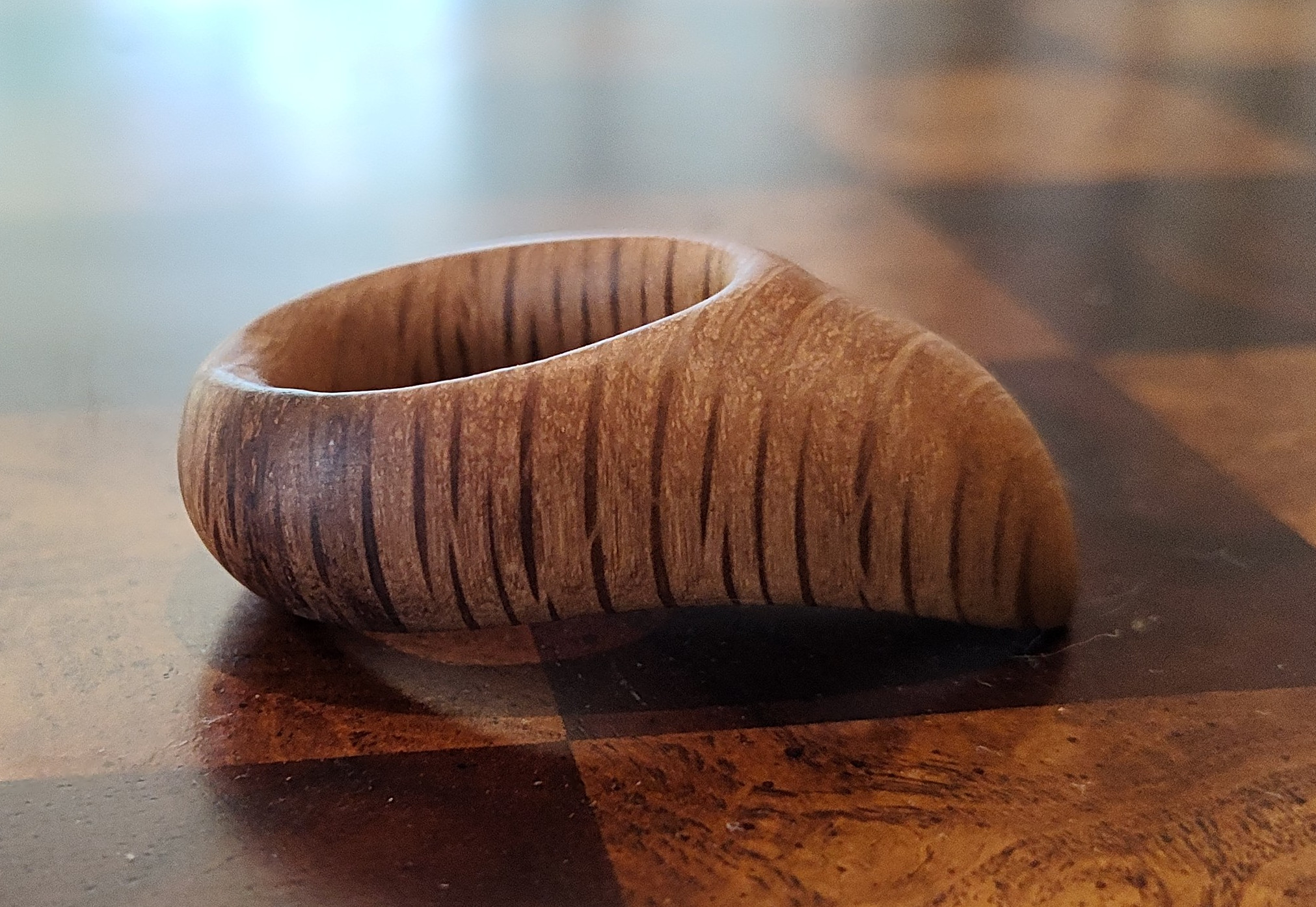
Well, it’s another aluminum thumb ring, several wooden ones and a simple, cheap, but nice little quiver.
This aluminum version is not a great success. I have yet to figure out exactly why, but it’s a bit squirrelly on the draw.
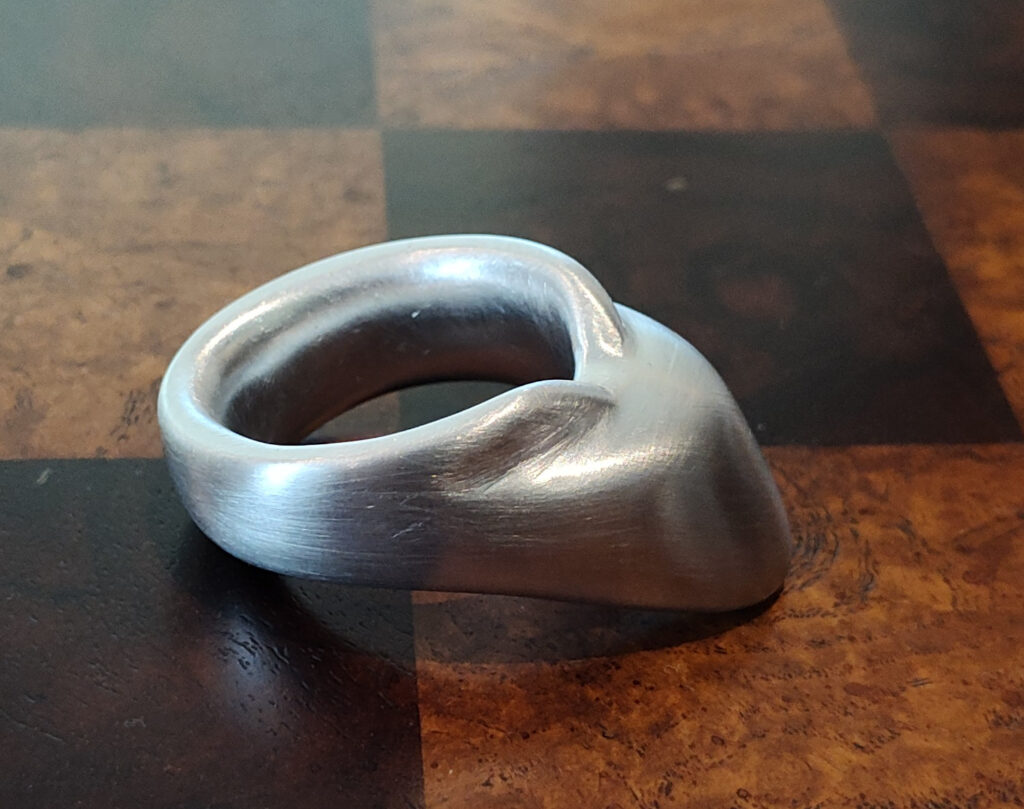
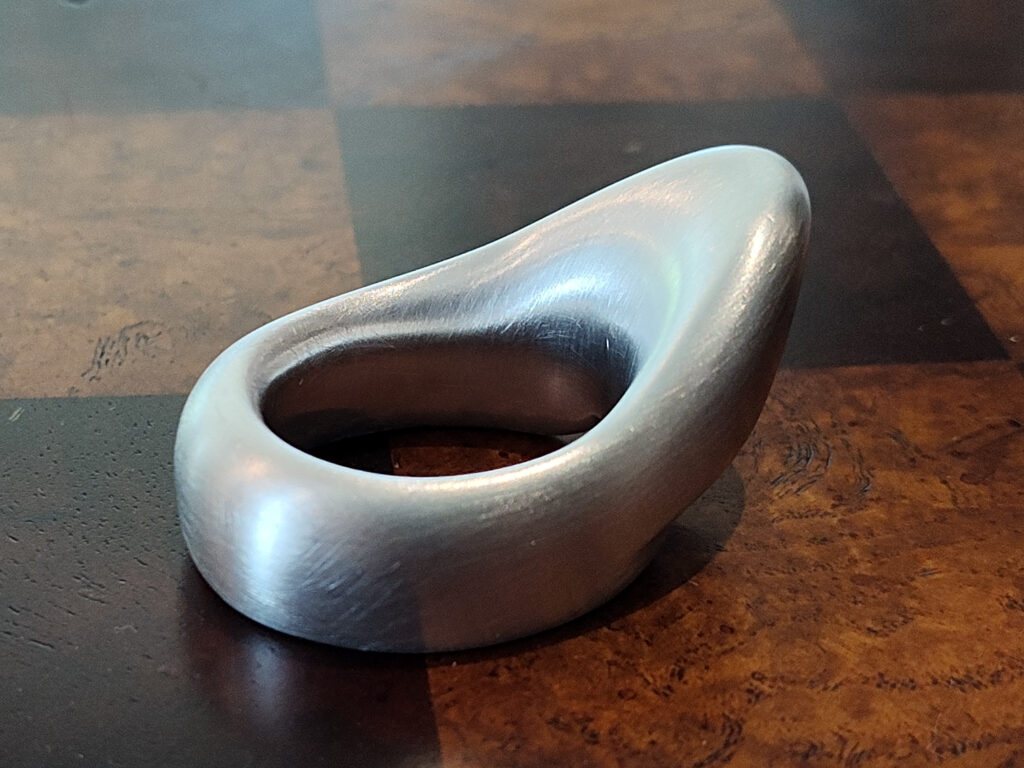
I suspect the roundness of the groove is partly to blame. Other, superior versions, have a flatter, or more square groove. The oval contour of this ring in the frontal area, I think, provides less surface area for the string to rest on. It still works well enough for a lighter draw, but it’s awkward.
UPDATE: Directly below is the re-tuned version, where I ground back the ridge/groove to allow the string to sit closer to the thumb, thus increasing the leverage and stability. The opening/cleft is now approximately twice as wide. I also ground the beak a bit. The reduction also increased the lateral surface area where the string rests. It now works really well. The cleft style is often attributed to an ability to feel the string, but I think just as importantly, the closer the string is to the thumb, the greater the leverage and stability. The outer walls beside the cleft are minimal but adequate to keep the string from attacking the thumb or worse, getting stuck on release — a rare but unpleasant event.
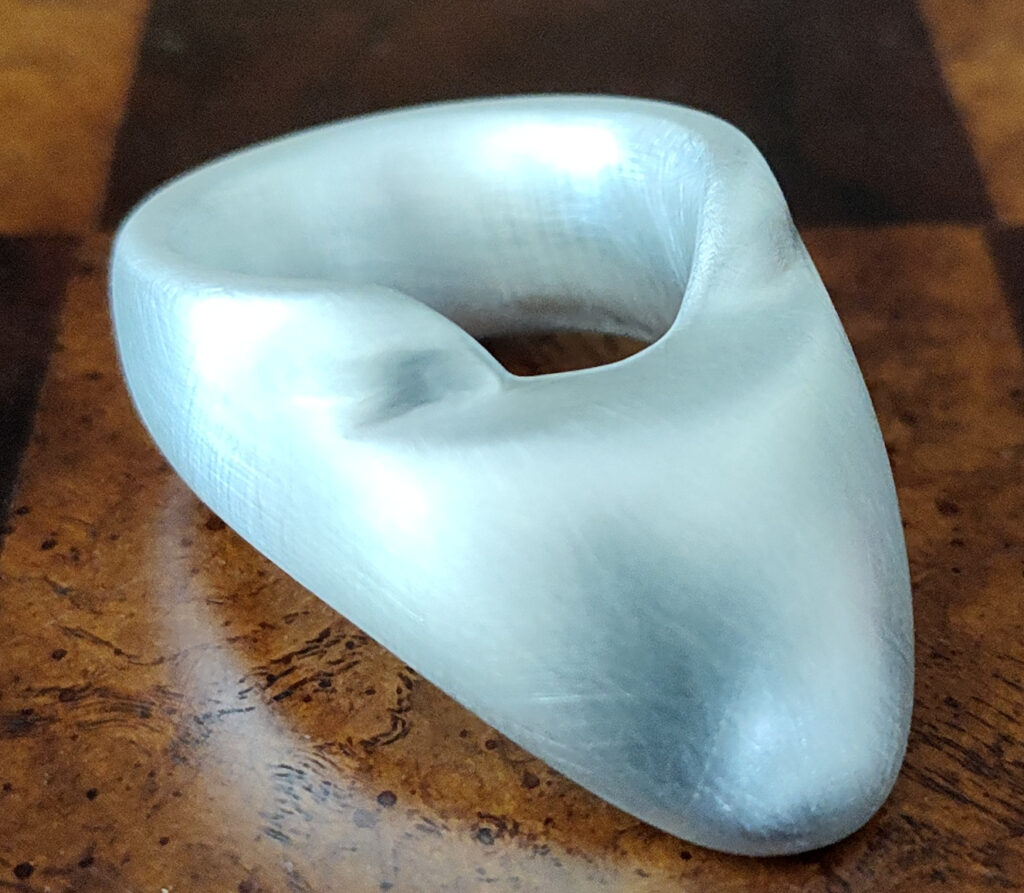
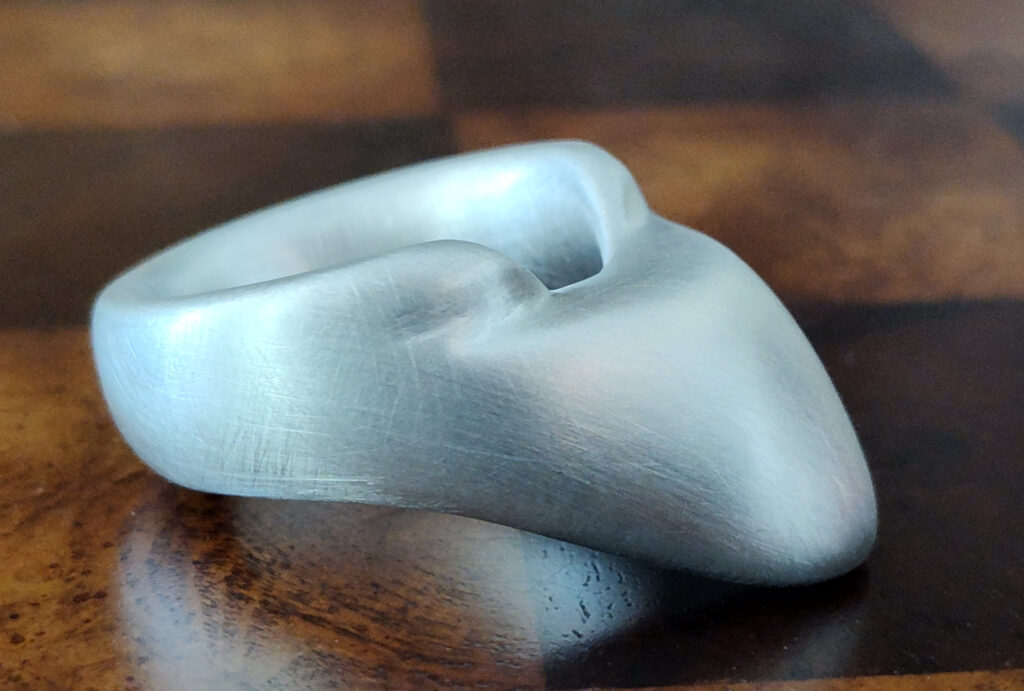
Below are several wooden rings; one in Brazilian ebony, one katalox, one in an unknown suspected oak (no groove), and the others in cocobolo. Ignore the aluminum imposter.

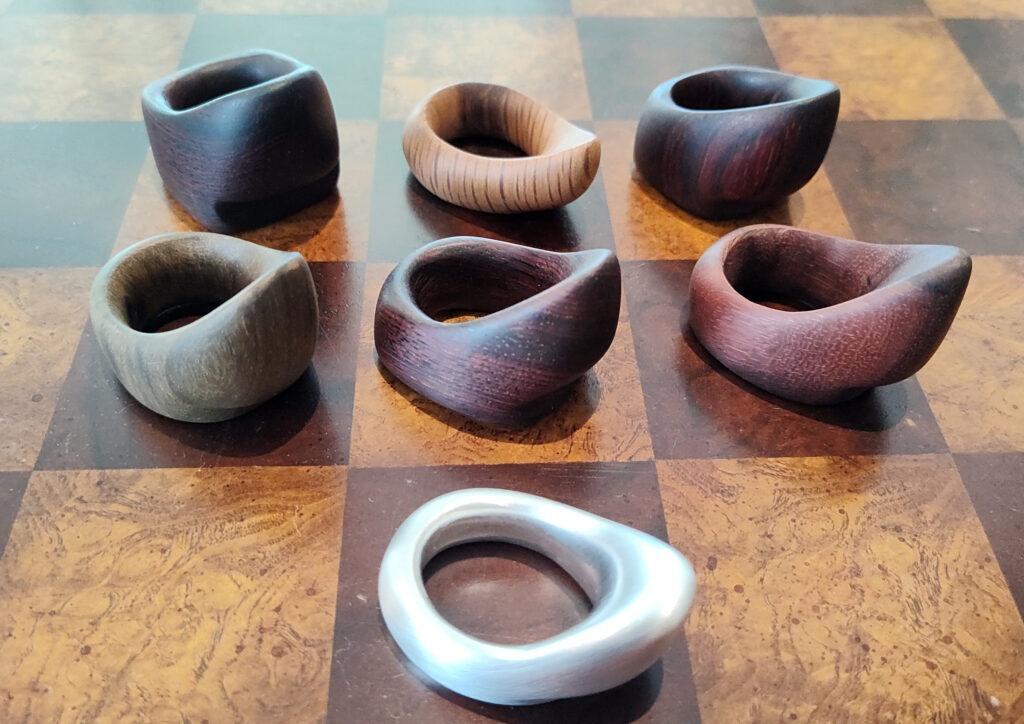
Directly below (next 3 images), is a very shallow hook style ring made of katalox. It is a bit bloated, but still seems to stay out of the way. The beak/lip is very straight. It’s a similar concept to the cocobolo version I sent to Armin, but quite different implementation as well as a bit less comfortable. The second image shows the ring’s position at full bend.
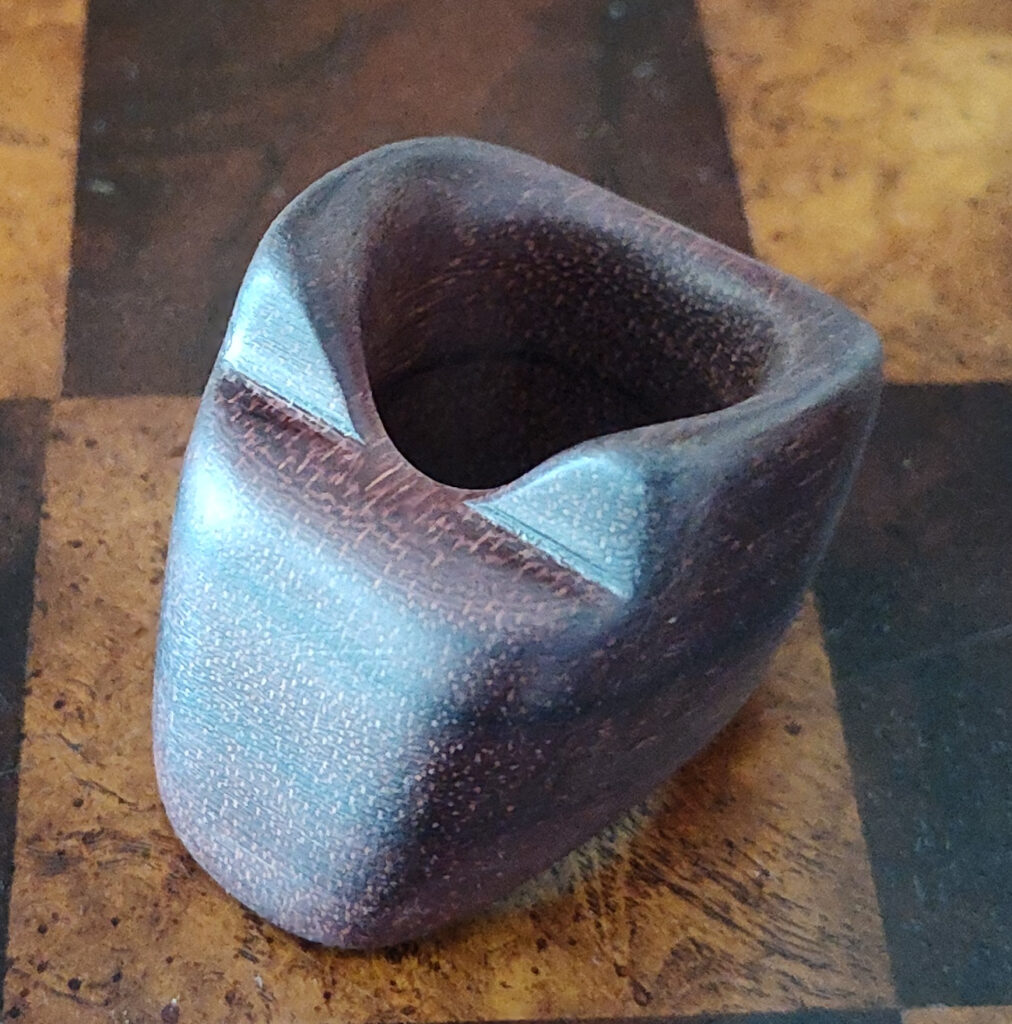
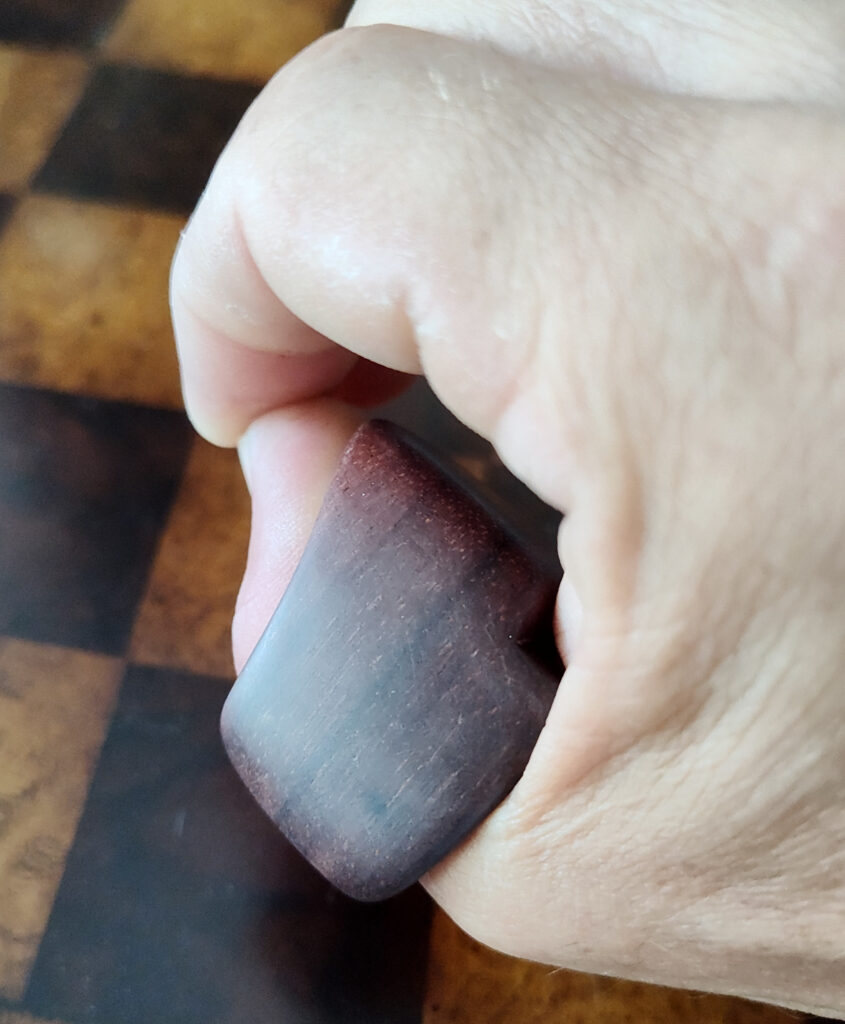
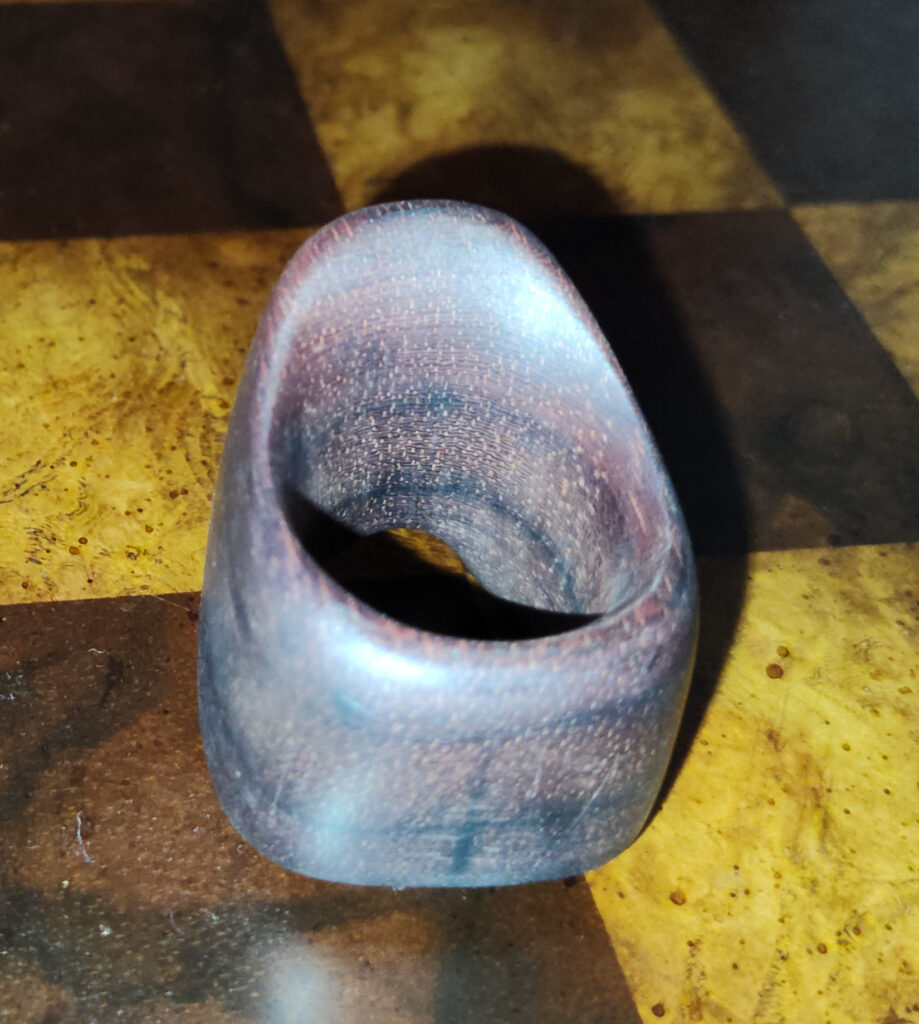
The quiver is a simple, slightly tapered rip of cherrywood, with leather. It functions as a back quiver or can be clipped on the belt. I find this dual function useful. I rarely shoot with a quiver on my back, but find it useful for walking. When I begin shooting, I typically clip it on the belt.

It holds a dozen arrows easily and the weight is amiable. Aside from the clip and the bottom piece of leather, it is made from scrap. The pink colored vanes are spray painted to aid in finding them hiding in the grass and woods. Since beginning archery, I have become a respectable hunter… of lost arrows. Contrast fortifies this skill.
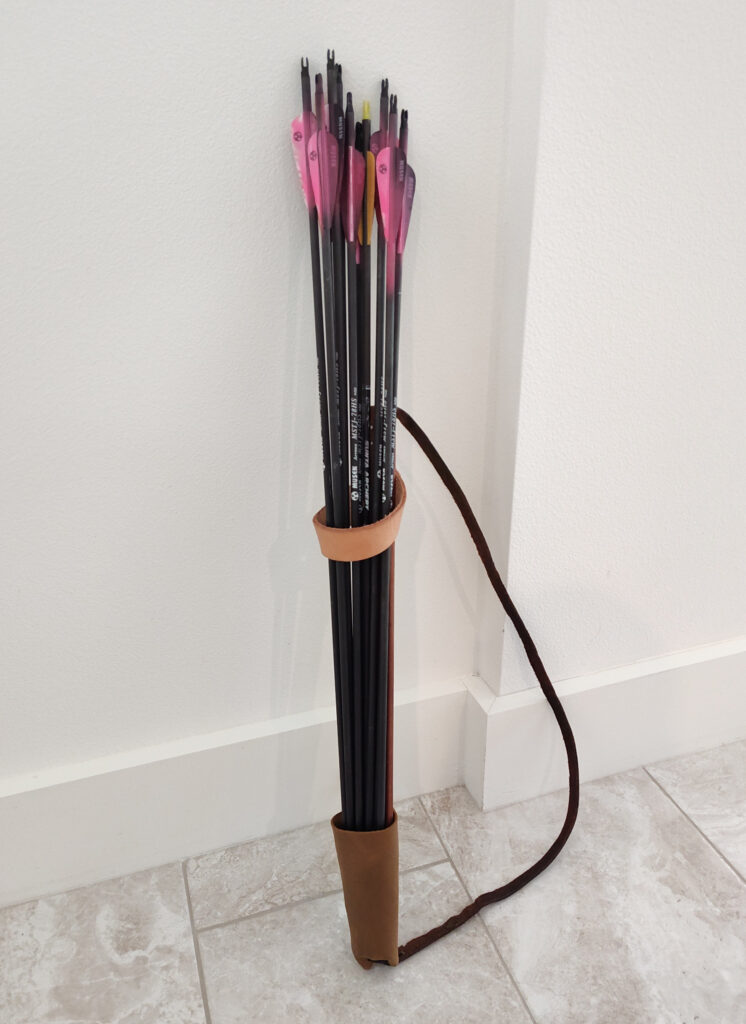
The skeletonized design is my preferred style for back quivers. It leaves the arrows open, only secured at two essential points; at the bottom for retention and midway to tighten the bundle. This style allows for a lightweight and functional quiver using minimal materials beyond a thin rip of quality wood. They can be produced cheaply but are sufficiently rugged. The primary flaw is the angle of the nocks while worn on the back, which makes them awkward to grab when shooting.
